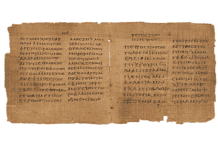Nationwide, Southern Baptists started 1,018 new congregations in 2021, NAMB reported at the 2022 SBC Annual Meeting in Anaheim, including 600 new church plants, 135 replants, 201 new affiliations and 82 new campuses. NAMB boasts a two-year survival rate for new churches at or above 80 percent.
As the largest Protestant convention of churches in the nation, more than 48,000 churches and 3,000 missions are Southern Baptist. Of those, 4,400 are participating Send Network churches that account for 18 percent of Southern Baptist baptisms, according to NAMB.net.
“What we’re trying to do is keep up with attrition levels and hopefully planting more churches than were closing,” Browning said. “Which we know churches start and churches die – the church of Ephesus, the church at Philippi, the church at Colossae. They were planted for the Kingdom of God, not for the sake of the church. And that means that every church, even the church’s life cycle, is for its Kingdom expansion more than anything else.”
Specifically in the Los Angeles area, Browning said, as churches close their doors it’s important to “place a strong Southern Baptist church planter, or a strong SBC replanter into these locations, because the city of Los Angeles isn’t going to give us anymore tax-less land.”
In Port Austin, Mich., Goforth began as a mission of the Independent Baptist church his father pastors, Calvary Baptist Church in nearby Caseville.
Goforth began looking for a network of churches to affiliate with in the early days of the COVID-19 pandemic, and reached out to Send Network. He appreciates the opportunity to establish relationships, but also benefits financially for the church that has 25 covenant members and averages 50 in attendance.
“We came into the Send Network a little bit later,” Goforth said. “Our finances were doing OK for the most part. But what the Cooperative Program enabled us to do was, it enabled me to get a little part-time help.”
He hired a part-time worship leader, partially funded his graduate studies at Southern Baptist Theological Seminary, supported community outreaches and began to take healthy steps toward financial independence when his five-year term as a Send Network church planter ends. The church has drawn additional volunteers, and the congregation will elect a lay elder and three deacons Nov. 6.
“The coolest part about our church,” Goforth said, “is that three other churches have had to close their doors in our location, in our actual building. When I examined what was the actual cause of this, what I discovered was in a town of 700 year-round, it’s pretty discouraging.
“And you can compare yourself to larger ministries in larger areas, and just get discouraged.”
Often the churches, which were from different denominational backgrounds, would fold after the leadership moved away. Goforth has himself gotten ministry offers that appear on paper to have better financial terms, he said, but he is committed to the work in Port Austin.
“Part of our biggest benefit of doing the Cooperative Program,” Goforth said, “is connecting our little church to the largest Protestant denomination basically in the world.”











